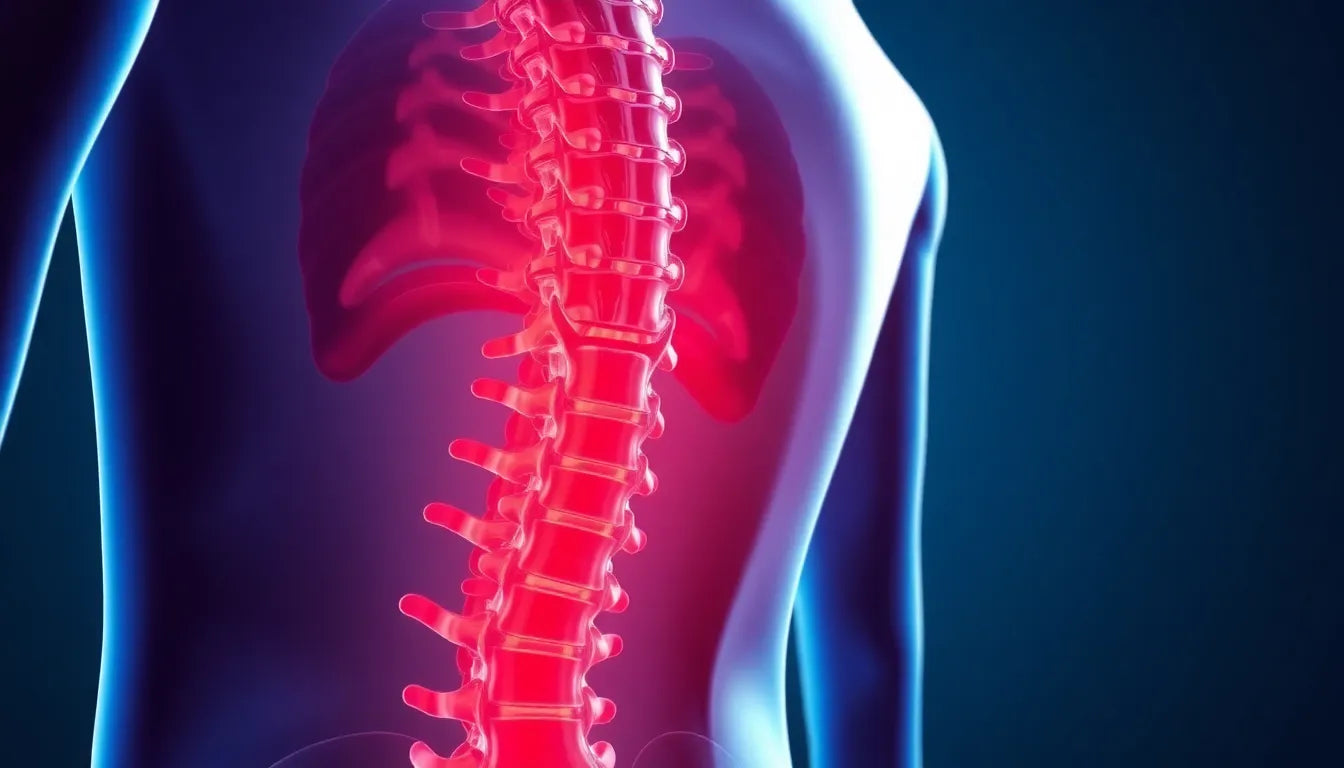Understanding the intricacies of herniated neck discs is crucial for those experiencing discomfort or considering treatment options. A herniated disc in the cervical spine occurs when the inner gel-like core of a disc protrudes through a tear in its outer layer. This condition is often a result of aging, wear and tear, or sudden injury. As the disc herniates, it can press on nearby nerves, leading to a variety of symptoms.
Common symptoms and impact
The symptoms of a herniated disc in the neck can vary, but they frequently include neck pain, numbness, tingling, and weakness in the arms. These symptoms arise because the displaced disc material puts pressure on the spinal nerves. The impact on daily life can be significant, affecting mobility and the ability to perform routine tasks. Even simple activities like turning the head or lifting objects can become challenging, leading to a decreased quality of life and potential emotional stress.
When is surgery necessary?
Surgery for a herniated disc in the neck is typically considered when conservative treatments fail to alleviate symptoms or when severe symptoms and neurological deficits are present. Conservative treatments might include physical therapy, medications, and lifestyle modifications. However, if these methods do not provide relief, or if there is significant nerve damage or myelopathy, surgical intervention may be warranted.
Overview of surgical options
There are several surgical procedures that can address a herniated disc in the neck. The most common is Anterior Cervical Discectomy and Fusion (ACDF), which is often regarded as the gold standard. This procedure involves removing the herniated disc and fusing the adjacent vertebrae to stabilize the spine. Another option is artificial disc replacement, which aims to preserve neck mobility by replacing the damaged disc with an artificial one. Lastly, posterior cervical discectomy is a less common approach used in certain cases where posterior access is beneficial.
In the following sections, we will delve deeper into these surgical solutions, exploring their procedures, benefits, and considerations. Understanding these options can help individuals make informed decisions about their treatment path, ensuring they receive the care that best suits their needs and lifestyle.
anterior cervical discectomy and fusion (ACDF): the gold standard
Anterior Cervical Discectomy and Fusion (ACDF) is widely recognized as the gold standard for treating herniated discs in the cervical spine. This surgical procedure is designed to relieve pressure on the spinal cord and nerves, thereby alleviating pain and other associated symptoms. The process begins with a small incision at the front of the neck, allowing the surgeon to access the affected disc. The herniated disc is carefully removed, and a bone graft is inserted in its place to facilitate fusion of the adjacent vertebrae. This fusion provides stability to the spine and helps prevent future herniation at that level.
One of the key advantages of ACDF is its high success rate in relieving symptoms of nerve compression. However, patients should be aware that the fusion process may limit some neck mobility. The recovery timeline for ACDF can vary, but most patients can expect a gradual return to normal activities within a few weeks to months, depending on individual healing and the extent of the surgery.
alternative surgical options: preserving motion and flexibility
artificial disc replacement
For those seeking to maintain neck mobility, artificial disc replacement offers a compelling alternative to traditional fusion surgery. This procedure involves replacing the damaged disc with a prosthetic one, aiming to preserve the natural movement of the spine. Artificial disc replacement is particularly suitable for patients without advanced degeneration in the cervical spine. Compared to ACDF, this approach may offer a quicker recovery and the benefit of maintaining motion between the vertebrae, which can be crucial for active individuals.
posterior cervical discectomy
Posterior Cervical Discectomy is another surgical option, though less commonly performed than anterior approaches. This technique involves accessing the herniated disc from the back of the neck, which can be beneficial in specific cases where the disc herniation is located posteriorly. While it may avoid some of the risks associated with anterior surgeries, such as damage to the esophagus or vocal cords, it may not be suitable for all patients. The choice between anterior and posterior approaches depends on the specific location and extent of the disc herniation.
conservative treatments prior to surgery
Before considering surgical intervention, it is essential to explore conservative treatment options. These non-surgical methods include physical therapy, medications, and injections, which can often effectively manage symptoms and improve quality of life. Physical therapy focuses on strengthening the neck muscles and improving flexibility, while medications may help reduce inflammation and pain. In some cases, corticosteroid injections can provide temporary relief by reducing swelling around the nerves.
Surgery is generally considered when these conservative measures fail to provide adequate relief, or if the patient experiences significant neurological symptoms or myelopathy. The decision to proceed with surgery should be made collaboratively between the patient and healthcare provider, taking into account the severity of symptoms, overall health, and personal preferences.
Understanding the full spectrum of treatment options, from conservative care to surgical intervention, empowers patients to make informed decisions about their health. Each surgical procedure comes with its own set of benefits and considerations, and the choice should be tailored to the individual’s unique condition and lifestyle needs. By working closely with their healthcare team, patients can navigate the complexities of treatment and find the most appropriate solution for their herniated neck disc.
Recovery and post-operative care for herniated neck disc surgery
Recovering from surgery for a herniated disc in the neck, whether Anterior Cervical Discectomy and Fusion (ACDF) or an alternative procedure, involves a structured post-operative care plan. The typical recovery timeline for ACDF can range from several weeks to a few months, depending on individual healing rates and adherence to rehabilitation protocols. Patients undergoing artificial disc replacement or posterior cervical discectomy might experience a slightly quicker recovery due to the preservation of neck mobility.
Post-operative care is crucial in ensuring a successful recovery. Follow-up appointments with the healthcare provider are essential to monitor healing and address any complications promptly. Physical therapy often plays a significant role in rehabilitation, helping patients regain strength and flexibility in the neck and shoulders. Adhering to prescribed exercises and avoiding strenuous activities are vital components of the recovery process.
Despite the success of these surgeries, potential risks and complications exist, such as infection, nerve damage, or non-fusion in the case of ACDF. Early detection and management of these issues are essential to avoid long-term consequences. Patients should maintain open communication with their healthcare team to address any concerns during recovery.
Patient-centered decision making in neck disc surgery
The decision to undergo surgery for a herniated neck disc should be a collaborative process between the patient and healthcare provider. Shared decision-making ensures that the chosen surgical approach aligns with the patient's specific needs, lifestyle, and health goals. Factors such as age, activity level, and the severity of symptoms play a critical role in determining the most suitable procedure.
Patient education is a cornerstone of this process, empowering individuals to understand their condition and the potential outcomes of various surgical options. By being well-informed, patients can make confident decisions and actively participate in their treatment journey. This approach not only enhances satisfaction but also improves overall treatment outcomes.
Frequently Asked Questions
Do I need surgery for a herniated disc in the neck?
Surgery is typically considered when conservative treatments, such as physical therapy and medications, fail to alleviate symptoms or when there are severe symptoms like significant nerve damage or myelopathy. A thorough evaluation by a healthcare provider will determine if surgical intervention is necessary.
What happens during neck disc surgery?
During neck disc surgery, such as ACDF, the surgeon makes an incision in the neck to access and remove the herniated disc. A bone graft or an artificial disc is then placed to stabilize the spine or preserve motion. The procedure aims to relieve pressure on the spinal nerves and alleviate symptoms.
How long does it take to recover from neck disc surgery?
The recovery timeline varies depending on the specific procedure and individual factors. Generally, patients can expect to resume normal activities within a few weeks to months. Regular follow-up care and adherence to rehabilitation protocols are crucial for a successful recovery.
What are the risks associated with neck disc surgery?
Common risks include infection, nerve damage, and non-fusion in the case of ACDF. However, these risks are managed through careful surgical techniques and post-operative care. It is important to discuss potential risks with your healthcare provider before surgery.
How does artificial disc replacement differ from traditional fusion surgery?
Artificial disc replacement involves replacing the damaged disc with a prosthetic one, preserving natural neck motion. In contrast, traditional fusion surgery, like ACDF, involves fusing the vertebrae, which may limit some mobility. The choice between these options depends on the patient's specific condition and desired outcomes.
Sources
- UF Health. "Herniated Disc - Cervical." University of Florida Health.
- Spine-health. "Cervical Herniated Disc Treatment Options." Spine-health.
- Orthopedic Institute. "Herniated Cervical Disc." Orthopedic Institute.
- Houston Spine Surgeon. "Herniated Disc in the Neck." Houston Spine Surgeon.
- Healthline. "Herniated Disc Surgery." Healthline.


















